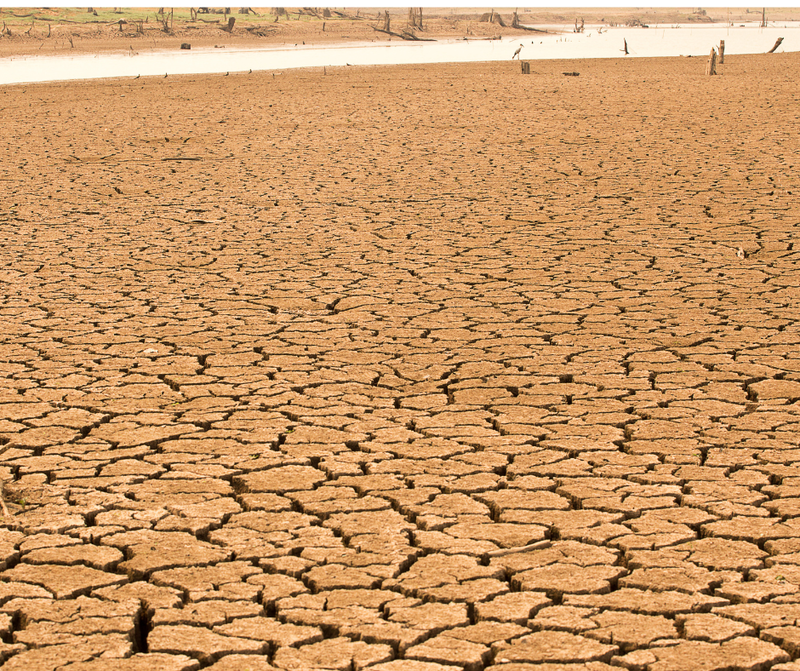The looming effects El Niño could have on Panama

El Niño is a weather phenomenon that occurs every few years, characterized by warmer than usual ocean temperatures in the equatorial Pacific. What could it mean for Panama?
Scientists are predicting that a moderate to severe El Niño will occur this year, and could have lasting effects globally.
With various institutions are currently monitoring the Pacific Ocean, here are a few predictions on the severity of this El Niño, anticipated effects, and what it could mean for Panama.
NASA spots Kelvin Waves, an Early Sign El Niño Is Coming
The Sentinel-6 Michael Freilich satellite used by NASA employs a radar altimeter to track ocean movement through microwave signals, which precisely measure the height of the ocean’s surface.
NASA reported that Kelvin waves, a potential precursor of El Niño conditions in the ocean, are rolling across the equatorial Pacific toward the coast of South America.
"When they form at the equator, Kelvin waves bring warm water, which is associated with higher sea levels, from the western Pacific to the eastern Pacific" NASA explains.
While El Niño is a naturally occurring event, scientists are documenting how climate change can influence the frequency and intensity of El Niño events, and in turn, how El Niño can have feedback effects on the Earth’s climate system. By understanding the complex relationships between El Niño, climate change, and other factors, effective strategies for mitigating and adapting can be implemented to combat these phenomenas. However, this requires collaboration across scientific disciplines and policymakers which isn’t always easy.
The socio-economic impacts of El Niño
An article published in the Journal Science revealed that El Niño events in 1982-83 and 1997-98 caused losses of $4.1 trillion and $5.7 trillion, respectively. Researchers estimate that the economic consequences of such events could amount to $3 trillion in the coming years.According to Christopher Callahan, an Earth system scientist at Dartmouth College who co-wrote the paper, this impact is most significant in low-income countries located in the tropics that are heavily affected by El Niño and that the effect is quite substantial.
The papar also added a body of research on climate change and how effective climate policy is tied to a better understanding of the social and economic costs of climate change. A particularly strong event, could partake in raising global temperatures above 1.5 degrees Celsius, the Paris Agreement’s warming threshold. While El Niño will influence wether patterns all over the world, causing significant droughts in some places while boosting extreme rainfall in others, here are some of the effect we can expect from a severe El Niño in Panama.
The Effects El Niño Could have on Panama
El Niño can cause a variety of weather-related effects in Central America, including droughts, floods, and landslides. These conditions can lead to crop failures, food shortages, and economic instability.
According to the Food and Agricultural organization of the UN (FAO), the Dry Arch of Panama, specifically its southwestern region, receives the least amount of rainfall each year.
According to Ramiro Barrios, the Vice President of the Cattle Raisers Association (Anagan), the drought in this region has been severe and persisting longer than usual. During the interview with EFE, he noted the dry and yellowed grass, as well as the malnourished cattle scattered across the Panama’s Azuero Peninsula.
“All our food reserves have been used up, the water in the pastures is running out … We want to see what our options are in these dry weeks to come, to be able to get ready and not let the same thing happen to us next year,” he said.
Droughts are a major concern in Panama since the country relies heavily on hydroelectric power and has a large agricultural sector.
During El Niño, rainfall can decrease, causing water levels in lakes and rivers to drop. This can lead to power shortages and disruptions in the country’s energy and water supply, and even effect the functionality of the Panama Canal.
In addition to the agricultural industry and energy supply, and water levels vital to the functioning of the Panama Canal, El Niño can also have a detrimental impact on fishing industries. When water temperatures rise, fish populations move to other areas with more suitable water temperatures.
FAO urges regions to adapt to the climate of the future
While El Niño is not a new phenomenon, having been observed for centuries, its impact on the environment and economies has been more heavily researched in recent years.
To mitigate the effects of El Niño globally, governments and organizations have implemented various strategies such as drought-resistant crop varieties, water conservation measures, and early warning systems. These measures can help to lessen the impact El Niño on local communities and economies.
With a loom event on the horizon FAO is urging regions to use technology to transform its agriculture and adapt to the "climate of the future."
According to Adoniram Sanches Peraci, the subregional coordinator for Mesoamerica and FAO representative in Panama and Costa Rica, El Niño presents both a challenge and an opportunity, for Central America.
Sanches suggests that available technology and information can be applied to mitigate the effects of such events. One example is to use more productive seed varieties rather than relying on the current options in the Central American Dry Corridor. However, despite the increasing severity of events like El Niño in Central America, agriculture has lost its significance on the economic agenda, says Sanches.
SOURCE: DOI: 10.1126/science.adf2983
https://www.fao.org/documents/card/en/c/cc5749en
https://efe.com/economia/2023-05-18/la-fao-pide-a-centroamerica-adaptar-su-agro-al-clima-del-futuro/
